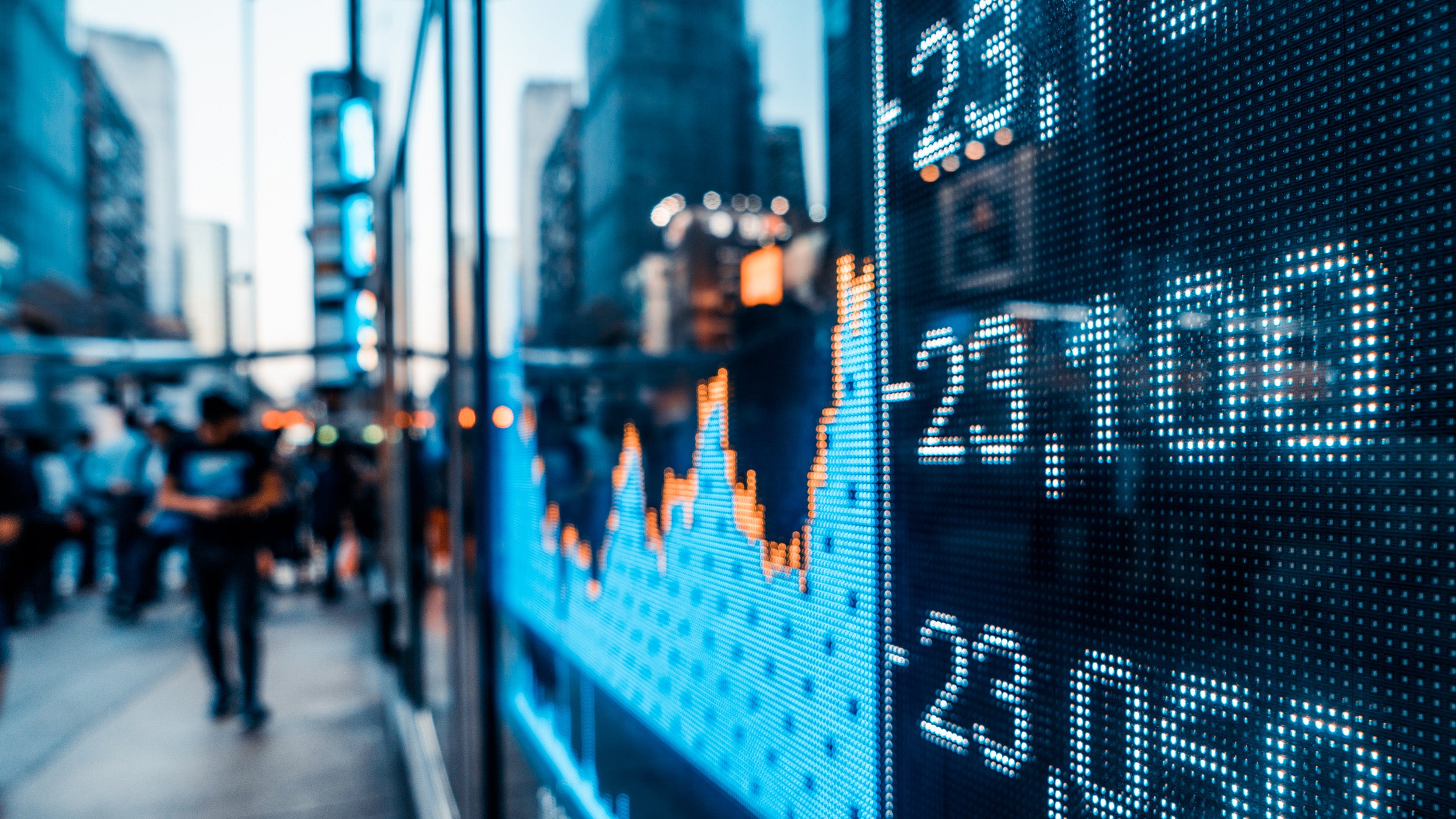
Markets and Economy Above the Noise: Policy uncertainty persists
The challenges of the current investment environment are well documented, so maybe it’s more interesting to talk about what could go right.

The Federal Reserve made its first rate cut. Can it return to a more accommodative policy without a recession?
The market’s implying that the fed funds rate will be 2.75% by the end of next year, pricing in 10 rate cuts the next 15 months.
The US stock market posted positive returns, on average, in the 12 months after the first Fed rate cut in an easing cycle.
Don Geiss: You’ve got to get your successor in place.
Jack Donaghy: I’ve got a shortlist ready.
Don Geiss: Well, word of advice, whoever you choose has got to be someone you trust.
Jack Donaghy: I guess that rules out the Federal Reserve.
Jack’s and Don’s exchange and exaggerated laughter in this early episode of 30 Rock is indicative of the skepticism that the investing community has over the central bank’s ability to appropriately conduct monetary policy. It’s not surprising. The Federal Reserve (Fed) has made some mistakes over the years, including tightening policy into most of the recessions on record. The Fed also erred on the side of caution in 2021, keeping policy too easy for too long as it attempted to support the economy through the early post-pandemic period. The result was high and rising inflation for the first time in 40 years.
The Fed has now successfully returned US inflation to its comfort zone. They can still snatch defeat from the jaws of victory, however, by keeping rates too high for too long. September’s 0.50% rate cut was a start, but as the dot plot indicates, there are plenty more cuts to come.
Do we trust that the Fed can return policy to a more accommodative stance in time without the economy falling into recession? Jack Donaghy and Don Geiss may be skeptical, but the Fed just may pull it off.
…the US stock market has, on average, posted positive returns in the 12 months following the first Fed rate cut in an easing cycle, with or without recessions.1 Candidly, averages can be somewhat misleading. For example, markets declined significantly following the first rate cuts associated with severe recessions, such as in 1973 and 2008. Clearly the state of the economy matters.
Strip out the severe recessions of 1973 and 2008 and the average return for the one year following the first rate cut is 13%, with an average maximum drawdown of 9%.1 That seems reasonable.
Fortunately, a recession doesn’t appear imminent today, and if it were to occur, there doesn’t appear to be the leverage or excess in the economy to foster a severe downturn.2
Q: Where should the fed funds rate be?
A: If this is a Goldilocks economy (not too hot and not too cold) then the fed funds rate should be neutral, meaning that it’s neither accommodative nor restrictive. A reasonable guesstimate of the so-called neutral rate, based on US growth and inflation expectations, is between 3.5% and 4.0%. So, the current 4.75% fed funds rate is still too restrictive, particularly given that the Fed’s preferred measure of inflation peaked in 2022 and returned to 2.5% this year and growth is slowing.3 An accommodative rate would be even lower than 3.5%. For what it’s worth, the market is implying that the fed funds rate will be 2.75% by the end of next year, pricing in 10 rate cuts over the next 15 months.4
Q: Wouldn’t a recession be a good reset for the economy?
A: No. I don’t view recessions as having unseen benefits. They’re often the result of policy mistakes that we should seek to avoid. Even a mild recession could cost the country millions of jobs. Compounding the problem, workers displaced during recessions tend to experience large lifetime earnings losses. One person’s spending, as we know, is another person’s income.
I don’t believe a recession would be a disaster for the stock market (see above), but real lives would be affected.
“…US economic data point to a resilient economy that continues to overcome a host of headwinds. The retail sales numbers are consistent with the view that considerable economic pressures on lower-income households are not impacting the level of overall consumption.”
– Mohamed El-Erian via Bloomberg News
Rapid wealth gains and lower energy prices are supporting the consumer even as employment and wage growth slow. Consumers have become more frugal, but household demand is still resilient.
There’s your case for the “soft landing.”
“I think if Harris was elected, I would pull my money from the market. I’d go into cash…”
– Hedge fund manager John Paulson via The Financial Times
(Sigh) Politics aside, I never welcome this rhetoric. Why? Because it’s never right. In 2016, Hillary Clinton warned that Donald Trump would bankrupt the country like one of his casinos. In 2020, Trump warned that the market would go to zero if Joe Biden were elected. Stocks performed well under both administrations.7
Paulson’s comments were directly related to a question concerning the potential taxes on unrealized capital gains that the Kamala Harris campaign has proposed. Remember, most items in a campaign’s platforms don’t become legislation. I’ve been doing this long enough to remember when George W. Bush was going to privatize Social Security, Barack Obama was going to take the country over the “fiscal cliff,” and Biden was going to raise the capital gains rate to 43.4%. None of it happened.
Unlike Paulson, I will not be pulling my money from the market, regardless of who wins.
An investor recently asked me how I could be so unconcerned about the US financial markets with the US presidential election less than 50 days away. I acknowledged that the S&P 500 Index did decline by more than 3.5% in the 50 days ahead of the last two presidential elections.8 But that could be expected to happen when the incumbent party and/or candidate is set to lose. In both instances, the markets continued their steady advance once the election passed.
The question, however, turned out to be less about typical elections than about this gentleman’s view that the US was becoming a “banana republic.” He believed that a radical re-engineering of the US economy was imminent and that we would soon resemble his native Cuba and its centralized economic system.
My response was that the US has not and will not radically re-engineer the economy. The US has three separate but equal branches of government with a system of checks and balances. Presidents, even in the event of single-party rule, tend to get one or two major legislative accomplishments.
The proof is in the construct of the US economy, which has been remarkably stable across multiple administrations. Private consumption and business investment have represented 80% of the economy for decades.9 I’d be hard-pressed to characterize the innovative US economy, which has been consistently driven by the private sector, as a “banana republic.”
Each month, I pose a question to ChatGPT — the artificial intelligence-driven chatbot — and assess the response.
Q: Stocks have already rallied a lot. Should I wait to invest?
A: If the stock market has already rallied significantly, deciding whether to invest now or wait involves considering several factors:
Not bad, ChatGPT. I would have made two points:
The Greater Possibilities podcast welcomed Justin Livengood, Senior Portfolio Manager of small- and mid-cap growth strategies. My takeaways:
My travels took me to Jacksonville, Florida, for a series of client meetings. Any time you need me to speak at The Brumos Collection, which has 35,000 square feet of antique automobiles and Porsche race cars, I’m happy to attend.
You tend to hear people’s fears when you do what I do for a living. Questions ranged from everything from the US becoming a “banana republic” (see above) to the collapse of the US dollar to the nation being on the precipice of World War III. Maybe I’m a cockeyed optimist, but I don’t spend time worrying about any of those things. Hopefully, I provided some context for my positivity. Plus, it’s hard to have too difficult a day when you’re checking out a PeugeotL45 from 1914.
See you next month. We got through September. See? That wasn’t so bad.
Source: Bloomberg L.P., 9/24. Based on the returns of the S&P 500 Index.
Source: US Federal Reserve, US Census Bureau, Bureau of Economic Analysis, Bloomberg. Based on the following metrics: Debt and Liabilities of Nonfinancial Corporate Businesses, Retail Inventory to Sales Ratio, Residential Investment as a percent of gross domestic product, and corporate bond spreads. Corporate bond spreads are represented by the Bloomberg US Corporate Bond Index. The option-adjusted spread is the measurement of the spread of a fixed-income security rate and the risk-free rate of return, which is then adjusted to account for an embedded option, such as calling back or redeeming the issue early.
Source: US Federal Reserve, 9/24 and US Bureau of Economic Analysis, 8/24. Based on the year-over-year percent change in the core Personal Consumption Expenditure.
Source: Bloomberg L.P., 9/20/24. Based on the fed funds implied futures rate, which is the difference between the spot rate and the futures rate, which is an interest rate that can be calculated for any security with a futures contract.
Source: US Federal Reserve, 8/24. The 11% growth is based on the current year-to-date trend.
Source: Bloomberg L.P., and AAA, 9/20/24. Based on US West Texas Intermediate Crude Oil and the daily national average of regular unleaded gasoline.
Source: Bloomberg L.P., 9/20/24. Based on the returns of the S&P 500 Index.
Source: Bloomberg L.P.
Source: US Bureau of Labor Statistics, 6/30/24.
Source: Bloomberg L.P., Invesco. Based on the S&P 500 Index from 1957 to August 2024.
Source: Bloomberg L.P., Invesco. Based on the S&P 500 Index from 1993 to 2003, 2003 to 2013, and 2013 to 2023.
Source: Standard and Poor’s, Russell, as of 8/31/24.

The challenges of the current investment environment are well documented, so maybe it’s more interesting to talk about what could go right.

The global economic outlook is uncertain, yet European, UK, Chinese, and Japanese stocks all rose last week while US stocks fell.

Six things to watch in the coming weeks, including US Treasury yields, US and European sentiment, US earnings outlook, and Chinese economic data.
Important information
NA3884061
Image: Catherine Falls Commercial / Getty
Some references are US specific and may not apply to Canada.
All investing involves risk, including the risk of loss.
Past performance does not guarantee future results.
Investments cannot be made directly in an index.
This does not constitute a recommendation of any investment strategy or product for a particular investor. Investors should consult a financial professional before making any investment decisions.
Drawdown is the largest cumulative percentage decline in net asset value as measured on a month-end basis.
Maximum drawdown (or decline) refers to the largest percentage drop in value during the measured period.
The S&P 500® Index is an unmanaged index considered representative of the US stock market.
The federal funds rate is the rate at which banks lend balances to each other overnight.
Diversification does not guarantee a profit or eliminate the risk of loss.
In general, stock values fluctuate, sometimes widely, in response to activities specific to the company as well as general market, economic and political conditions.
Fluctuations in the price of gold and precious metals may affect the profitability of companies in the gold and precious metals sector. Changes in the political or economic conditions of countries where companies in the gold and precious metals sector are located may have a direct effect on the price of gold and precious metals.
Stocks of small- and mid-sized companies tend to be more vulnerable to adverse developments, may be more volatile, and may be illiquid or restricted as to resale.
Spread represents the difference between two values or asset returns.
Tightening monetary policy includes actions by a central bank to curb inflation.
West Texas Intermediate (WTI) is a type of light, sweet crude oil.
The Bloomberg US Corporate Bond Index measures the investment grade, fixed-rate, taxable corporate bond market. It includes US dollar-denominated securities publicly issued by US and non-US industrial, utility, and financial issuers.
The Federal Reserve’s “dot plot” is a chart that the central bank uses to illustrate its outlook for the path of interest rates.
Gross domestic product (GDP) is a broad indicator of a region’s economic activity, measuring the monetary value of all the finished goods and services produced in that region over a specified period of time.
Inflation is the rate at which the general price level for goods and services is increasing.
Inventory-to-sales ratio depicts the relationship between a company’s end-of-month inventory values and monthly sales.
Leverage measures a company’s total debt relative to the company’s book value.
Monetary easing refers to the lowering of interest rates and deposit ratios by central banks.
The neutral rate is the theoretical federal funds rate at which the stance of Federal Reserve monetary policy is neither accommodative nor restrictive.
Option-adjusted spread (OAS) is the yield spread that must be added to a benchmark yield curve to discount a security’s payments to match its market price, using a dynamic pricing model that accounts for embedded options.
The risk-free rate represents the interest an investor would expect from an absolutely risk-free investment over a specified period of time.
The opinions referenced above are those of the author as of Sep 25,2024. These comments should not be construed as recommendations, but as an illustration of broader themes. Forward-looking statements are not guarantees of future results. They involve risks, uncertainties and assumptions; there can be no assurance that actual results will not differ materially from expectations.
This link takes you to a site not affiliated with Invesco. The site is for informational purposes only. Invesco does not guarantee nor take any responsibility for any of the content.